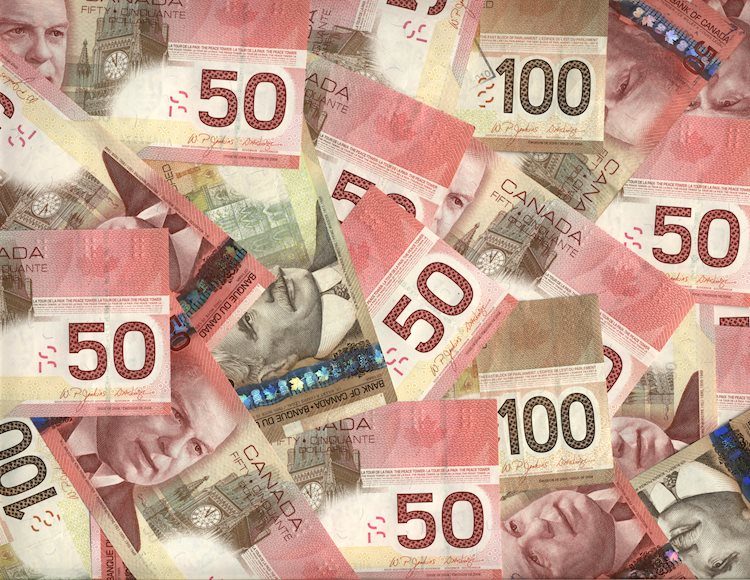- USD/CAD rises sharply to near 1.3600 after stronger-than-expected US labor market report.
- A robust pace in the US job growth data has forced traders to pare Fed’s 50 bps rate cut expectations.
- Higher Oil prices have strengthened the Canadian Dollar.
The USD/CAD pair climbs to near the round-level resistance of 1.3600 in Friday’s New York session. The Loonie asset strengthens as the United States (US) Nonfarm Payrolls (NFP) report showed that labor demand remained robust and the wage growth accelerated in September, which has prompted a sharp upside move in the US Dollar (USD).
The US NFP report showed that the economy added 254K jobs, which was significantly higher than the estimates of 140K and the former release of 159K, upwardly revised from 142K. The Unemployment Rate decelerated to 4.1% from expectations and the August print of 4.2%. Annual Average Hourly Earnings, a key measure to wage growth, accelerated at a faster-than-expected pace to 4.0%. Month-on-month wage growth measure rose by 0.4%.
Signs of a sharp improvement in the labor market health have dented market expectations for the Federal Reserve (Fed) to deliver another larger-than-usual interest rate cut of 50 basis points (bps) in November. According to the CME FedWatch tool, the probability of the Fed reducing interest rates by a half-of-a-percentage in November has almost waned. The Fed started the policy-easing cycle with a 50-bps interest rate cut in September.
Fading Fed large rate cut expectations have led to a sharp uptick in the US Dollar, with the US Dollar Index (DXY) rising to a fresh two-week high above 102.50. 10-year US Treasury yields surge to near 3.96%.
Meanwhile, the Canadian Dollar (CAD) is also outperforming the majority of its peers due to a sharp surge in the Oil price. A full-fledged war between Iran and Israel has deepened fears of Oil supply remaining tight. It is worth noting that Canada is the leading exporter of Oil to the US, therefore, higher Oil prices strengthen the CAD.
US Dollar FAQs
The US Dollar (USD) is the official currency of the United States of America, and the ‘de facto’ currency of a significant number of other countries where it is found in circulation alongside local notes. It is the most heavily traded currency in the world, accounting for over 88% of all global foreign exchange turnover, or an average of $6.6 trillion in transactions per day, according to data from 2022. Following the second world war, the USD took over from the British Pound as the world’s reserve currency. For most of its history, the US Dollar was backed by Gold, until the Bretton Woods Agreement in 1971 when the Gold Standard went away.
The most important single factor impacting on the value of the US Dollar is monetary policy, which is shaped by the Federal Reserve (Fed). The Fed has two mandates: to achieve price stability (control inflation) and foster full employment. Its primary tool to achieve these two goals is by adjusting interest rates. When prices are rising too quickly and inflation is above the Fed’s 2% target, the Fed will raise rates, which helps the USD value. When inflation falls below 2% or the Unemployment Rate is too high, the Fed may lower interest rates, which weighs on the Greenback.
In extreme situations, the Federal Reserve can also print more Dollars and enact quantitative easing (QE). QE is the process by which the Fed substantially increases the flow of credit in a stuck financial system. It is a non-standard policy measure used when credit has dried up because banks will not lend to each other (out of the fear of counterparty default). It is a last resort when simply lowering interest rates is unlikely to achieve the necessary result. It was the Fed’s weapon of choice to combat the credit crunch that occurred during the Great Financial Crisis in 2008. It involves the Fed printing more Dollars and using them to buy US government bonds predominantly from financial institutions. QE usually leads to a weaker US Dollar.
Quantitative tightening (QT) is the reverse process whereby the Federal Reserve stops buying bonds from financial institutions and does not reinvest the principal from the bonds it holds maturing in new purchases. It is usually positive for the US Dollar.
Read the full article here

